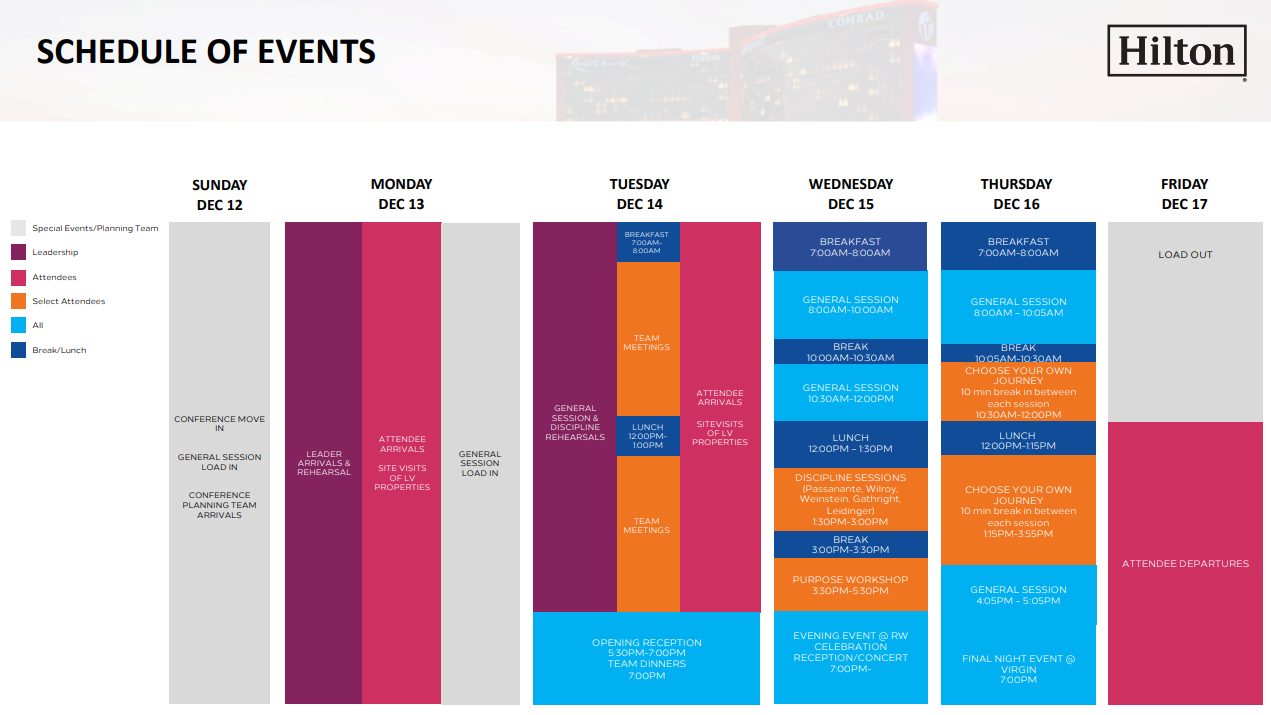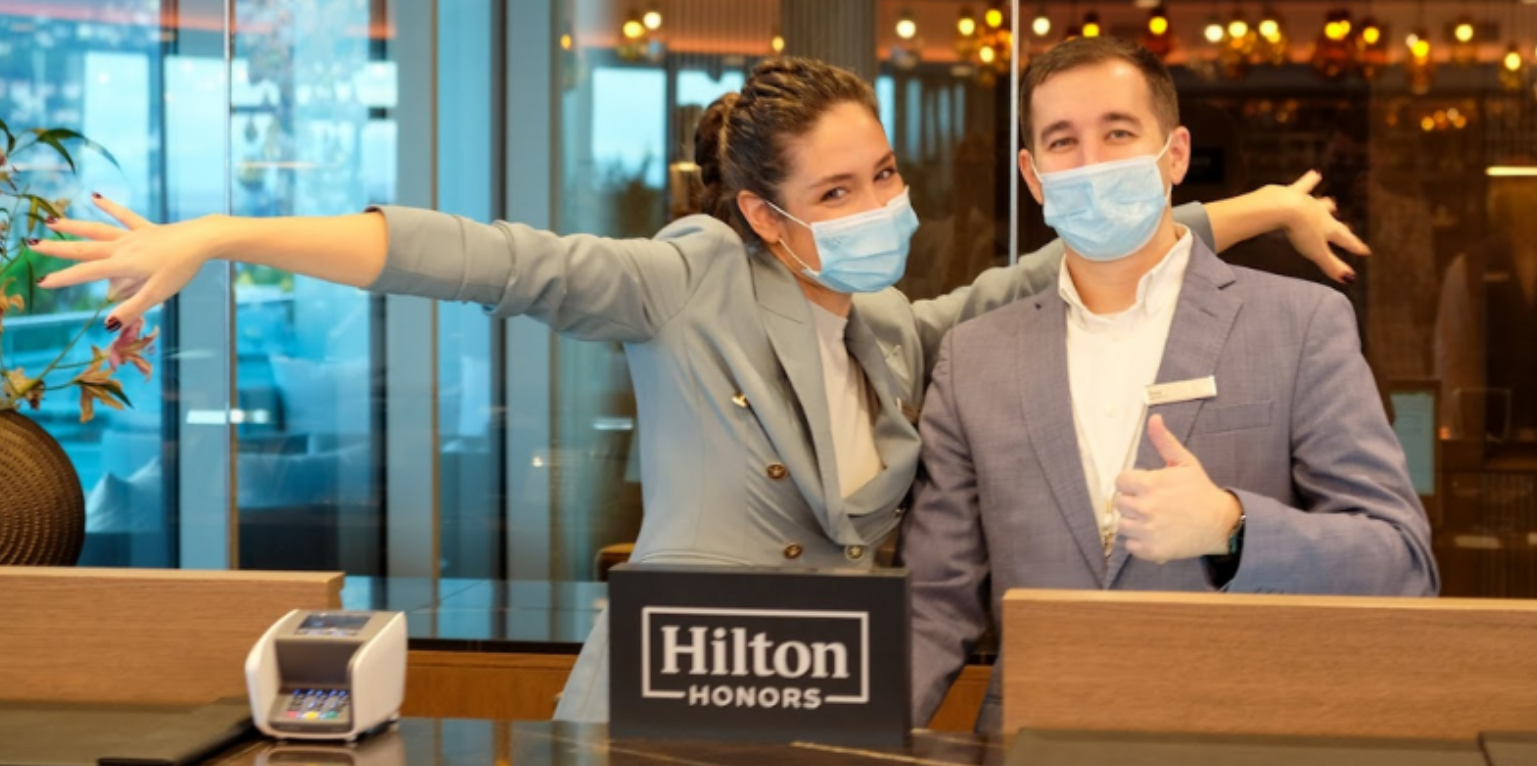When you think of an event agenda, it seems pretty cut-and-dry at first. You typically know what you need to schedule, and you have your space contracted already, so it’s easy to build an agenda, right? You start out thinking tactically – general session, break outs, trade show, meal functions, breaks. HOWEVER, aligning on an agenda is actually a fluid thing. Personally, I’m not sure an agenda is truly final final until you walk in the door and start rehearsals! Sure, you need to have it fairly firmed up prior to registration launch so your attendees can sign up for the sessions they’re interested in attending, or those that are mandatory. But a LOT can change in an agenda, especially these days when so much has changed or is changing, so buckle up and be prepared once again to be flexible!
As we have shared, for this event, we are working closely with our stakeholders to make sure our conference meets the original objectives. Content is KING when developing the agenda to make certain the objectives are met. One would assume the logical order would be: develop objectives, then agenda, then fill in with content. I’d suggest that the last two should be swapped; decide on the CONTENT that will support your objectives before you finalize the agenda. If you do it the other way around, be prepared for about a dozen show flow re-writes like we did! Make sure you are aligned with leaders and stakeholders on the content first, then build the agenda to support the delivery of the content. Keep in mind:
- The audience. Now more than ever it is important to consider attendee wellness as you plan. Be sure and schedule frequent breaks, possibly an extended lunch time. Remember that many are working with fewer resources and still have to do their “day job” while at conference. Keep General Sessions to a few hours versus an entire day (or late in the day!) Also, attendees may have changed roles, so there may be many new folks attending these events for the first time or meeting new team members for the first time. Plan networking receptions and deliberate opportunities to connect and collaborate.
- The presenters. They may not have presented to a LIVE audience in a while, so schedule extra rehearsal time and time to build the right message/presentation.
- The message. How will your agenda support the message you want to convey to meet the objectives? Smaller discussion sessions mixed with targeted breakouts and General Sessions might be the winning formula!
- The sponsors. Budgets are still tight as our partners and historical vendors are recovering, so sponsorships may not be as readily available as in previous years. This may impact your agenda or plans for networking hubs, trade shows and vendor showcases.
As we have finalized our agenda for ACC, we really focused on our attendee’s personal growth, wellness, and what THEY wanted to hear about and discuss. We built in time for teams to connect that haven’t been together in 2 years. We will have General Sessions with presentations and updates from our leaders, some cross functional workshops for new commercial teams to get to know each other and breakouts focused on mental wellness, diversity, inclusion, and purpose. We’re trying something new this time and have added two sessions of small discussion groups we’re calling “choose your own journey” where attendees pick the topics they are most interested in. All 30+ discussion topics are led by our own team members. We think this mix of connection points, learning, updates and of course high energy FUN evening events will be a great combo for this year’s agenda!
Pro-Tips:
- Start with CONTENT that will help meet your conference objectives.
- Keep the objectives top of mind at all times. If there is content that doesn’t ladder up to support an objective, get rid of it!
- Stay flexible with your agenda as you are building content. Be willing to change it up as you finalize your speakers, messages, learning opportunities.
- Try something different! Nothing is “same ole, same ole” these days, so take a chance with trying a new session, format or environment.
- Ask attendees what they are most interested in learning about or hearing about. Everyone’s time is valuable so make sure your agenda and topics are on point.
- Schedule extra time in your agenda for speakers to rehearse. Many have not presented in front of a live audience in two years, so they may be rusty.
- Consider your virtual audience and which sessions you may want to live stream or record for those that aren’t able to attend live.
















